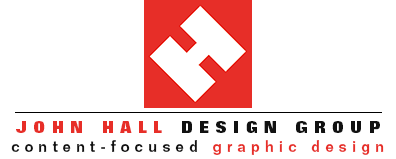Recently, it seems we have seen a resurgence of large, print editorial projects in the studio. In the past three months alone we have completed (or are just finishing up) three major book and magazine projects: Building Small, a 264-page book on smaller-scale, incremental urban development for the Urban Land Institute (ULI). Home Hydroponics, a 192-page how-to book on indoor plant and vegetable growing projects for the Quarto Group; and the annual 64-page visitor’s guide to Gloucester, Massachusetts, Discover Gloucester, which we produced for the second-straight year.
Building Small cover design
Home Hydroponics cover design
2021 Discover Gloucester cover design
While the studio works on a wide variety of other content-focused design projects ranging from websites to annual reports to marketing collateral, it is book and magazine design that is our most core-competency, and really our true love.
These three projects vary considerably in design and subject matter from one another, but they are all dynamic and visual publications, with many elements (sidebars, step-by-step instructions, case studies, listings, maps, etc.). and are heavily illustrated. In these types of publications, the flow and pacing of all these elements has to be considered, and well-structured for optimum reader experience. Balancing all these elements, while creating visually attractive publications, is where our long history in magazine design and art direction really comes into play, and makes us stand out from other, more generalist, design shops.
Below is more about each of these projects:
Building Small
We enjoy working on books for ULI, and this title was especially engaging to us because it so aligned with many of John’s interests on a local level. Titled, Building Small: A Toolkit for Real Estate Entrepreneurs, Civic Leaders, and Great Communities, the book’s primary thesis is that “smaller, incremental forms of adaptive reuse and ground-up real estate development create more enduring and authentic communities while serving to incubate and support a more vibrant, resilient, local economy.” It is aimed at community leaders and smaller developers, and shows municipal leaders how to encourage more smaller, incremental development, and developers how to overcome obstacles to make these smaller-scale projects more feasible.
This subject interests us greatly, as our studio is in a FORMER mill building that has been repurposed as artists’ space on Rantoul St, an old industrial boulevard in downtown Beverly, Massachusetts. With its proximity to both the commuter rail into Boston and the harbor, the area has been the focus of major redevelopment efforts for the past decade. Around us are some great examples of how smaller scale, older buildings have been rehabbed into artist’s lofts, breweries (4 within a half mile of our studio) restaurants, galleries, and other cool, activated spaces. But there are also too many examples are larger, cheaply built and bland apartment buildings that have stripped any sense of place or authenticity out of whole blocks. John has been very vocal on a civic level about the need to better integrate the old and new spaces in order to maintain the authenticity of the area, and retain the human scale.
So to be able to work on this deeply researched book by an expert on the topic, was a lot of fun, and our experience and interest in the subject helped us interpret and present visually what the author was trying to convey.
A couple spreads from Building Small.
Home Hydroponics
Home Hydroponics is a how-to book that focuses on building soilless growing systems to cultivate greens, vegetables, and herbs in the home. In addition to growing techniques, the book provides step-by-step instructions on building projects to integrate hydroponics into your living space.
Like Building Small, it is highly illustrated with photographs, and as a step-by-step book, required a lot of attention to detail to keep both the visual appeal and flow, and also ensure that the reader could easily follow the instructions and illustrations. Many quick-hit sidebars were placed throughout to highlight specific details, and tables of materials and technical notes also had to be integrated into the design, along with a system of icons to identify specific types of crops and building details.
In short, many elements to consider and balance all while keeping an attractive and dynamic design.
A couple spreads from Home Hydroponics.
Discover Gloucester
For the second straight year we produced the annual visitor’s guide to Gloucester, Massachusetts, a fishing and artist community and travel destination made famous in the Perfect Storm and Wicked Tuna. Gloucester is about a 20-minute drive up the road from our studio.
The 64-page, digest-sized, publication is heavily advertising-supported, with a mix of editorial features on things to do in the Gloucester and the Cape Ann area, as well as categorized listings section, a calendar of upcoming events, and maps.
So like the other projects, its a lot of information to balance in creating not just a visually-pleasing design, but a user-friendly reference tool.
As is the nature of advertising-supported publications, there were a lot of materials submitted by individual advertisers, that needed to be monitored for quality control. So in addition to designing the editorial sections, and balancing all the above elements, much of the work on this project was keeping a handle on the myriad of materials supplied by advertisers. For that, we harkened back to our very first design job in the advertising art department of the late, great Boston Phoenix.
Opening spread from the 2021 Discover Gloucester Visitor’s Guide.








